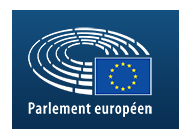Document type: scientific article published in Applied Animal Behaviour Science
Authors: Carrie Ijichi, Hayley Wild, Francesca Dai, Alexandre Bordin, Heather Cameron-Whytock, Samuel J. White, Kelly Yarnell, Gareth Starbuck, Aurelie Jolivald, Lauren Birkbeck, Sarah Hallam, Emanuela Dalla Costa
Preview: The Dually™ is a control headcollar designed to improve equine behaviour during handling challenges by applying greater pressure than a standard headcollar. Previous research indicated it did not improve compliance in naïve horses but did result in higher Horse Grimace Scale scores (HGS) indicative of discomfort. However, subjects had not been trained to step forward to release the pressure applied by the headcollar. The current study aimed to determine the effect of training on behaviour and physiology of horses wearing the Dually™ headcollar during handling challenges. To this end, subjects received three training sessions prior to completing two handling tests in which they crossed distinct novel obstacles, one wearing a Dually™ with a line attached to the pressure mechanism and one attached to the standard ring as a control. Behaviour was coded by hypothesis blind researchers: time to cross the obstacle and proactive refusal (moving away from the obstacle) were recorded as indicators of compliance and the Horse Grimace Scale was used to measure discomfort caused by each configuration of the device. Infrared thermography of ocular temperature, heart rate variability (RMSSD and low/high frequency ratios (LF/HF)) and salivary cortisol were measured as indicators of arousal. Data from the previous study on Naïve horses was also included to compare responses to the Dually in Naïve and Trained horses. Training resulted in a decrease in RMSSD (p = 0.002) and an increase in LF/HF (p = 0.012), compared to rest, indicating arousal. As per the original study, horses did not complete the tests more quickly in the Dually, compared to control (p = 0.698). Trained horses from this study tended to be more proactive in the Dually compared to Controls (p = 0.066) and significantly more so than Naïve horses from the previous study (p = 0.002) suggesting that behaviour becomes less desirable during early Dually training. Yet, stress and HGS indicators were not higher in the Dually compared to Control during testing. Results suggest the Dually has a negative effect on behaviour but not on stress or discomfort during short handling challenges. Further research is warranted to determine the long-term effect of Dually experience on behaviour and welfare.




